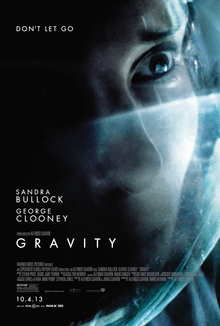No Cover
Manuel Ferreira Garcia Redondo, O Descobrimento do Brazil
From the Gutenberg Project
Format Size Read this book online (HTML) 149 kB EPUB (no images) 67 kB Kindle (no images) 108 kB
2. Long review:
2.1. What I liked: The chance to exercise my Portuguese. New -- to me -- information on Christopher Columbus.
Roller-coaster or walk-in-the-park? Walk in the park.
The book is free to download.
2.2. What I did not like: The tedious Gutenberg license.
2.3. Who I think is the audience: Brazilians, Portuguese, and me.
2.4. Is the book appropriate for children to read? Yeah, if they read Portuguese.
2.5. On the basis of reading this book, will I buy the author's next book? Odd to say so, but I might. I am not opposed to the notion.
2.6. The plot in a nutshell:
O descobrimento do Brasil: Prioridade dos portugueses no descobrimento da America (full title) was a 68-page paper Sr Redondo delivered at a conference held in 1911 in São Paulo, Brazil. Sr Redondo marshaled indirect evidence that the Portuguese discovered America before Columbus. That evidence included maps, ship logs, and the Treaty of Tordesillas.2.7. Other:
I anticipated Sr Redondo's arguments before I read his paper. The view Sr Redondo took was typical of Brazilians. So what if the Portuguese discovered America before Columbus? The Portuguese did not exploit their discovery. Columbus did.
What I found new and interesting was Redondo's argument that Columbus sailed with the Portuguese.
Before 1492, Spaniards did not look west across the Atlantic for new lands to conquer. They looked south. Their goal was to drive the Moors from Spain. The only Europeans with any substantial knowledge of what lay west were the Portuguese.
To get experience sailing the Atlantic, Columbus must have sailed with the Portuguese. Evidently his credentials as an Atlantic sailor were good enough to get him an audience with King Ferdinand and Queen Isabella. Where did Columbus earn these credentials? Redondo said it was with the Portuguese. Who can say it was not?
Why did Columbus not make his offer to the Portuguese? Redondo did not say, but I have a guess to venture. I bet Columbus did make his offer to the Portuguese, and they refused.
Why did the Portuguese refuse Columbus? Because they thought he was wrong. You see, everybody knew the world was round. Everybody who counted, anyway. But Columbus miscalculated the circumference of Earth. He thought Asia lay just a short journey beyond the Antilles, that the voyage to Asia was short. (FWIW the Portuguese knew of the Antilles before Columbus made his voyage in the Santa Maria.) The Portuguese ran their own calculations and came up with the correct distance. By their reckoning, no ship could carry enough stores for the crew to survive the voyage. They remained wedded to their plan to circumnavigate Africa.
I found Redondo's surmise that Columbus sailed with the Portuguese persuasive. His argument that the Portuguese found America first? Yeah, okay, and so what? The Portuguese made nothing of the discovery until the Spaniards got in the game. The Portuguese played the whole first quarter without anyone else on the field, and they did not score. The Spaniards suited up and began playing in the second quarter and scored three touchdowns: discovery of the Americas, conquest of the Aztecs, and conquest of the Incas. The Portuguese played catch-up from that point on. But unlike the Jets, the Portuguese did not pull off a comeback.
The Gutenberg Project lists the work as 'O Descobrimento do Brazil'. I think this is an error. In Portuguese, Brazil is spelled with an 's'; thus, Brasil. And in Portuguese, 'descobrimento' is not capitalized in the title. Where the reference is to the work on Gutenberg, I used the errant Gutenberg version.
YMMV.
2.8. Links: Manuel Ferreira Garcia Redondo
2.9. Buy the book: O Descobrimento do Brazil (Free to download)


 -- I want my money back.
-- I want my money back.  -- Worth a rental, not more. <--
-- Worth a rental, not more. <--  -- Worth first-run theater price once.
-- Worth first-run theater price once. -- I will pay first-run theater price to see it again.
-- I will pay first-run theater price to see it again. 





